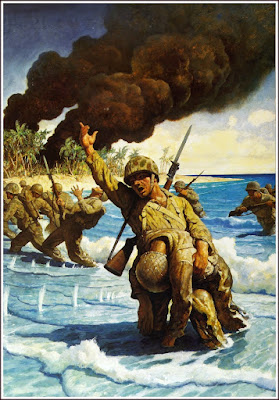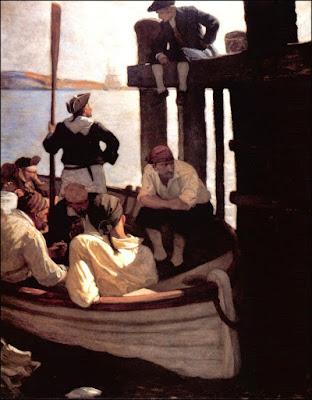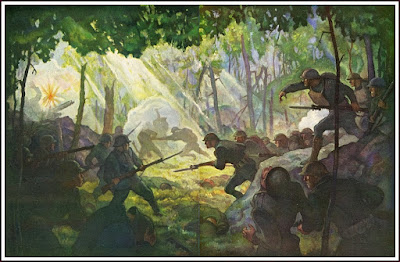By
Armand Cabrera
In the book 40 illustrators and how They Work N. C. Wyeth says “Every Illustration or painting I have made in the last 30 years has been from the imagination or memory. However, I have constantly studied from the figure, from animals and from landscape, and have especially stressed the training of my memory. "
Another quote from 40 Illustrators and How They Work
"Wyeth, asked for an account of his technical procedure, gave me the following: This painting was made entirely from memory, which is my customary practice for creative painting."
The interview was from 1944 a year before Wyeth died which means all of his illustrations going back to 1914 were created this way. I take this to mean although he painted and drew from life; he did all of his illustrations without reference in that time frame. That would include Robin Hood and everything after that but not Kidnapped or Treasure Island.
In the book Three generations of Wyeths Andrew makes similar claims about N.C. so I have no reason to doubt it without proof to the contrary. It’s pretty amazing when you think about it. During his lifetime, N. C. Wyeth created over 3,000 paintings and illustrated 112 books.
Some quotes by Andrew about his dad.
"Pa was also a master of still life. I think he felt that he needed to work from life, and I can understand that. If you work all the time from your imagination as Pa did for his illustrations you think I got to go out and eat a good roast beef or something. You need to nourish yourself. Working completely from the imagination is very draining experience.
"When it came to illustrating pa had an amazing ability to do them without a model"
"Pa's animals are outstanding in his illustrations. He could do a horse on its back, flying through the air, or in any position you'd want." I asked him once "How did you learn to do a horse in so many positions without a model and make it really alive?" Well I'll tell you on the roundup I had the chance to cut up a horse that had died. I'll never forget the anatomy of a horse.”
![]()
Talking with other artists about this, it’s interesting that a lot of people can’t accept someone could work this way. That is not to say I believe he did everything completely from his imagination. Andrew even says N.C. used his children for difficult or tricky things like a foot here or hand there and had them pose so he could get a clearer image of his idea. He had an extensive collection of props and costumes that he kept for reference. But that is still a different thing than a lot of today’s painters and their complete reliance on photographic mimicry. Where it is not enough to just refer to the reference but it must be slavishly adhered to at all cost even the success of the painting. NC Wyeth had a completely unique style that has been often imitated but never surpassed I beleive the basis for that is in his imagination.




































































































